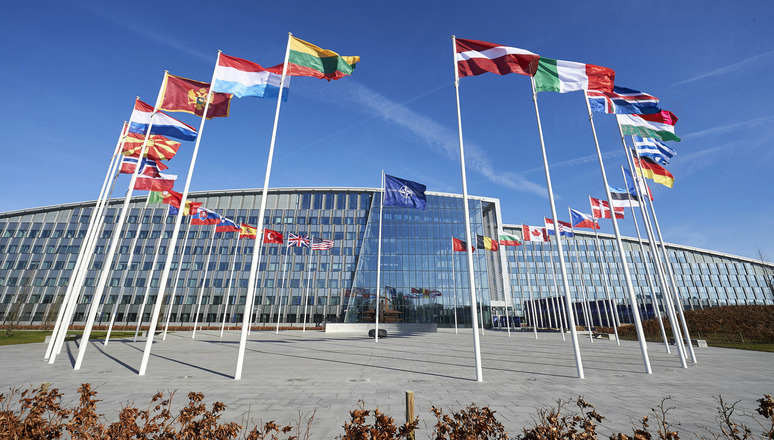A NATO intervention: The Right Choice for Libya
Keywords:
NATO, LibyaAbstract
On the 19th of March 2011, the North Atlantic Treaty Organisation (NATO) launched an invasion into Libya to protect civilians from the mass atrocities being committed by the Libyan dictator Muammar Gaddafi. Rape, murder, human rights violations and indiscriminate attacks were just a few of the abuses that Gaddafi was carrying out.[1] Despite these obvious atrocities, this NATO intervention has been a hotly contested topic since a civil war broke out following the intervention. Opposing scholars (Hobson, 2016[2]; Kuperman, 2015[3]) suggest that Libya would have fared better without an intervention, and
declare that the intervention was another way the West tried to demonstrate its geopolitical power in the Middle East. This paper rebuts these scholars and asserts that it was the right choice for NATO to intervene, despite the ensuing Libyan civil war, because it was necessary to end the precarious situation in Libya. Furthermore, if NATO hadn’t intervened, additional unnecessary harm would have come to the Libyan people. This is proved by comparing the Libyan war to the Syrian civil war, which did not have a NATO intervention, and by analysing the threatening actions of Gaddafi. To conclude, this paper asserts that it was the right choice for NATO to intervene in the Libyan conflict under the mandate ‘Responsibility to Protect’ because civilian safety in Libya 2011 was in jeopardy and because there was an international consensus, under a legitimate authority, that an intervention was needed.
References or Bibliography
Kuperman, Alan J. "Obama's Libya debacle: how a well-meaning intervention ended in failure." Foreign Affairs 94.2 (2015): 66-77.
Nuruzzaman, Mohammed. "The 'Responsibility to Protect' Doctrine: Revived in Libya, Buried in Syria." Insight Turkey 15.2 (2013): 57.
Kuperman, Alan J. "A model humanitarian intervention? Reassessing NATO's Libya campaign." International Security 38.1 (2013): 105-136.
Averre, Derek, and Lance Davies. "Russia, humanitarian intervention and the Responsibility to Protect: the case of Syria." International Affairs 91.4 (2015): 813-834.
Carpenter, Ted Galen. "Tangled web: The Syrian civil war and its implications." Mediterranean Quarterly 24.1 (2013): 1-11.
Wedgwood, Andrew, and A. Walter Dorn. "NATO’s Libya Campaign 2011: Just or Unjust to What Degree?" Diplomacy & Statecraft 26.2 (2015): 341-362.
Forte, Maximilian Christian. Slouching Towards Sirte: NATO's War on Libya and Africa. Montreal: Baraka books, 2012.
Pattison, James. "The ethics of humanitarian intervention in Libya." Ethics & International Affairs 25.3 (2011): 271-277
Morris, Justin. "Libya and Syria: R2P and the spectre of the swinging pendulum." International Affairs 89.5 (2013): 1265-1283.
Guha-Sapir, Debarati, et al. "Patterns of civilian and child deaths due to war-related violence in Syria: a comparative analysis from the Violation Documentation Center dataset, 2011–16." The Lancet Global Health 6.1 (2018): e103-e110.
Karniel, Yuval, Amit Lavie-Dinur, and Tal Azran. "Broadcast coverage of Gaddafi's final hours in images and headlines: A brutal lynch or the desired death of a terrorist?" International Communication Gazette 77.2 (2015): 171-188.
Ulfstein, Geir, and Hege Fosund Christiansen. "The legality of the NATO bombing in Libya." Int'l & Comp. LQ 62 (2013): 159.
Levitt, Matthew A. "The political economy of Middle East terrorism." Middle East Review of International Affairs 6.4 (2002): 49-65.
Odeyemi, Christo. "R2P intervention, BRICS countries, and the no-fly zone measure in Libya." Cogent Social Sciences 2.1 (2016): 1250330.
Dahan, Nadine. “Libya’s ongoing crisis shouldn’t be blamed on the 2011 intervention” Available from <https://www.middleeasteye.net/opinion/dont-blame-2011-intervention-libyas-ongoing-crisis>
Human rights Watch “Unacknowledged deaths: Civilian Casualties in NATO’s air campaign in Libya” Available from <https://www.hrw.org/report/2012/05/13/unacknowledged-deaths/civilian-casualties-natos-air-campaign-libya>
Gregory, Paul “Colonel Gaddafi’s lesson for dictators” Available from <https://www.forbes.com/sites/paulroderickgregory/2011/10/30/colonel-gaddafis-lesson-for-dictators/>
The Guardian “Libya Attacks under way- Saturday 19th March part 2” Available from <https://www.theguardian.com/world/blog/2011/mar/19/libya-no-fly-zone-live-updates>
Gregory, Robert H. Clean bombs and dirty wars: air power in Kosovo and Libya. U of Nebraska Press, 2015.
Shapiro, Ari (2013) ‘Why Syria is more complicated than Libya” Available from <https://www.npr.org/2013/08/29/216858049/why-syria-is-more-complicated-than-libya>
Rogin, Josh (2016) “Obama’s Biggest mistake isn’t Libya. Its Syria” Available from
https://www.bloomberg.com/opinion/articles/2016-04-11/obama-s-biggest-mistake-isn-t-libya-it-s-syria
Hobson, Christopher. "Responding to failure: The responsibility to protect after Libya." Millennium 44.3 (2016): 433-454.
The Guardian (2011) “How Libya and Syria compare” Available from < https://www.theguardian.com/world/2011/apr/28/syria-libya-how-they-compare>
Washington Post (2020) “Civilian casualties surge in Libya during Tripoli battle, study finds” Available from <https://www.washingtonpost.com/national-security/civilian-casualties-surge-in-libya-during-tripoli-battle-study-finds/2020/06/01/17e4d7a2-a408-11ea-8681-7d471bf20207_story.html>

Downloads
Posted
License
Copyright (c) 2021 Anya Nedungadi

This work is licensed under a Creative Commons Attribution-NonCommercial-NoDerivatives 4.0 International License.
The copyright holder for this article has granted JSR.org a license to display the article in perpetuity.


